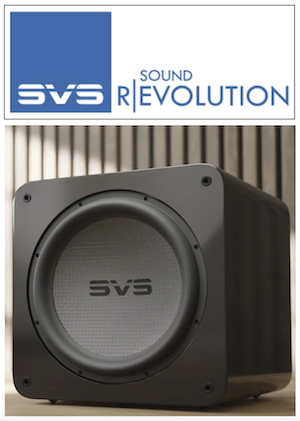Sonnie Parker
Senior Admin
More
- Preamp, Processor or Receiver
- StormAudio ISP Elite 24 MK3 Processor
- Main Amp
- McIntosh MC1.25KW Monoblock Amps
- Additional Amp
- StormAudio PA 16 MK3
- Other Amp
- McIntosh MA252 2-Channel Hybrid Integrated Amp
- Music Server
- ROON Nucleus One
- Universal / Blu-ray / CD Player
- Magnetar UDP800 UHD Player
- Streaming Equipment
- Kaleidescape Strato C Media Player
Kaleidescape Terra Prime 22TB Server
Lenovo X1 Carbon
Apple TV 4K
- Turntable/Cartridge
- Music Hall Stealth Turntable
Ortofon 2M Blue Cartridge
- Streaming Subscriptions
- Lifetime Roon Subscription
Tidal
qobuz
Netflix
Amazon Prime
- Other Equipment
- MediaLight Mk2 v2 Flex Bias Lighting
Zero Surge 8R15W-1
Zero Surge 2R20W
- Front Speakers
- RTJ 410
- Front Wide Speakers
- JTR Noesis 110HT
- Center Channel Speaker
- MartinLogan Focus C-18
- Surround Speakers
- JTR Noesis 210RT
- Surround Back Speakers
- JTR Noesis 210RT
- Front Height Speakers
- JTR Noesis 110HT-SL
- Middle Height Speakers
- JTR Noesis 110HT-SL
- Rear Height Speakers
- JTR Noesis 110HT-SL
- Subwoofers
- JTR Captivator - 4000ULF-TL x2 + 2400 x6
- Bass Shaker System
- Dayton Audio BSA-200 Amp
4 BST-1 Bass Shakers
- Other Speakers
- Wharfedale Super Linton
- Video Display Device
- Sony 98X90L
- Remote Control
- URC MX-890
- Cables
- AudioQuest - Various
THX PixelGen HDMI
Pangea Power Cables
Blue Jeans Cables
SVS Soundpath Cables
Custom Cables
- Satellite System
- Dish Joey 4K
- Other Equipment
- Salamander Synergy Equipment Stand
VTI Amp Stands for the Monoblocks
Solidsteel - S3 Series Amp Stand
- Network/Internet
- C-Spire 1Gig Fiber
Omada OC300 Controller
Omada ER8411 10G Router
Omada SG3218XP-M2 10G/2.5G Managed Switch
Omada SG2210XMP-M2 10G/2.5G Managed Switch
SilentPower LAN iPurifier Pro (for Nucleus One)
Asustor Flashstor NAS
- Headphones/IEMs
- HIFIMAN HE1000se
Unique Melody Mest MKII
- Headphone DAC/Amp
- Eversolo DMP-A6
RME ADI-2 DAC FS
HIFIMAN Goldenwave Serenade
- Whole House System
- HEOS System
Home-150 Speaker x6
Samsung S9 Tablet w/ HEOS
- Office/Study System
- Office System
Dell Precision Computer
Roon Networked
Vanatoo Transparent One Encore Plus Speakers
- Secondary/Additional Room System
- AV Test Room System
NAD M33 Streaming DAC Amp
MartinLogan Motion XT F200
JTR Captivator RS1
miniDSP EARS
Zero Surge 8R15W-1
Zero Surge 2R20W
Dell Optiplex
Roon Networked
- Additional Room System
- Sunroom System
Denon AVR-X1800H HEOS Roon Ready Receiver
Zu Audio DW-6 Speakers
Dayton Audio IO8XTW Outdoor Speakers
Roon Networked
Dish Joey
JVC 37" TV
- Additional Room System
- Cabin System
Onkyo TX-SR805 Receiver
Infinity Primus P163 Speakers
RSL Outsiders Outdoor Speakers
Shield TV Pro
Sony 55" TV
- Additional Room System
- Vinyl Room
Accuphase E-280 Integrated Amp
Technics SL-1210GR2 Turntable
Ortofon 2M Blue Cartridge
KLH Model Three Speakers
Zero Surge 8R15W-1
- Additional Room System
- Barn Jam
Denon AVR-X1600H HEOS Roon Ready Receiver
Soundfield Custom Speakers
This will be a discussion thread about this book... but before we get into that, I am curious where most people are buying this electronically. I see it on Amazon, but I don't have a Kindle reader. I will be using a laptop, and Kindle for the PC is shamed pretty bad by reviewers. I've read the first chapter and part of the second via Google Books, and it seems okay there, and it's $53 there. Perhaps that's the going price, as it is $47 on Amazon.
So about the book thus far. Wow... I can see a LOT of naysayers in regards to this book. Toole seems to go against what appears to me to be the mainstream thought process of comparing audio equipment. No doubt he has ruffled some feathers. However, I've not seen any of it yet, because I have probably ignored it or just haven't been in the right places to read negative comments about it. As of right now, I've only seen very positive comments about it.
A few comments I see that could stir up a hornets nest... and you really can't mistake these for being taken out of context. They are very likely related to exactly what you would think they are in most cases. In some cases, more context is probably helpful to see the bigger picture, but not mandatory. If you want to know more... buy the book.
Just a very small sampling of comments I see argued over significantly.
I am not suggesting everyone else is necessarily right or wrong here... just posting it up for discussion. Obviously we all decide for ourselves who and what we want to trust for information sources and we can make our own justifications based on the writer's credentials and/or whatever else we choose to use as justification.
So about the book thus far. Wow... I can see a LOT of naysayers in regards to this book. Toole seems to go against what appears to me to be the mainstream thought process of comparing audio equipment. No doubt he has ruffled some feathers. However, I've not seen any of it yet, because I have probably ignored it or just haven't been in the right places to read negative comments about it. As of right now, I've only seen very positive comments about it.
A few comments I see that could stir up a hornets nest... and you really can't mistake these for being taken out of context. They are very likely related to exactly what you would think they are in most cases. In some cases, more context is probably helpful to see the bigger picture, but not mandatory. If you want to know more... buy the book.

Electronic devices, analog and digital, are also in the signal paths, but it is not difficult to demonstrate that in competently designed products, any effects they may have are small if they are not driven into gross distortion or clipping. In fact, their effects are usually vanishingly small compared to the electro-acoustical and acoustical factors. Tests of these effects quickly become exercises in “is there or is there not any difference?” This was the origin of the well-known ABX test, which has shown with monotonous regularity that well-designed power amplifiers, loudspeaker wires and the like are not responsible for offensive sounds. Occasionally a test may show that a difference was observed at a level of statistical significance. This is of importance only if the observers can state a preference—which one is more real or more accurate? It is human nature to think that hearing any difference is associated with an improvement, which is a reason that A vs. B tests need to be randomly balanced with B vs. A tests. Conducting meaningful listening tests is a science unto itself (see Chapter 3).
Some audio journalists are hostile to the very notion that audio is amenable to scientific investigation—asserting that only subjective opinion, preferably theirs, matters.
The presumption implicit in this illustration is that it is possible to create measurements that can describe or predict how listeners might react to sounds produced by the device being tested. There was a time when this presumption seemed improbable, and even now some people claim that we cannot measure what we hear. The reality is that with research and the development of newer and better measure ment tools, it has been possible to move the hands of the “doomsday clock” to the point where detonation is imminent. In fact, it would be correct to say that the explosion has begun. Some aspects of audible sound are now more reliably revealed by technical data than by the normal kinds of subjective evaluations.
Many of the variations in recordings take forms that can be addressed by old fashioned bass and treble tone controls. Unfortunately, tone controls are frowned upon by audio purists, who think that they somehow degrade the performance.
We need to be more realistic, acknowledging that “loudspeaker” music is not the same as live music. There are fundamental similarities to be sure, but there are also gross differences. No magic wire, loudspeaker stand or spike, power line filter or trinket on a wall will make it right.
This was the origin of the well-known ABX test, which has shown with monotonous regularity that well-designed power amplifiers, loudspeaker wires and the like are not responsible for offensive sounds. Occasionally a test may show that a difference was observed at a level of statistical significance. This is of importance only if the observers can state a preference—which one is more real or more accurate? It is human nature to think that hearing any difference is associated with an improvement, which is a reason that A vs. B tests need to be randomly balanced with B vs. A tests.
I have noticed this effect when I return home after a trip. I turn my system on and it may sound a little “different.” It doesn’t last long, and in a few minutes I am back in the familiar context. Nothing has “broken in”; it was me readapting. This is the common situation of product reviewers noting differences in sound of a new product introduced into their listening room, but over time adapting to its characteristics. Apart from tiny changes in woofer resonance frequency, loudspeakers do not “break in”—that is a physical fact—but listeners certainly do.
In parts of the audio industry there is a belief that all components − wires, electronics and loudspeakers − need to “break in.” Out of the box, it is assumed that they will not be performing at their best. Proponents vehemently deny that this process has anything to do with adaptation, writing extensively about changes in performance that they claim are easily audible in several aspects of device performance. Yet, the author is not aware of any controlled test in which any consequential audible differences were found, even in loudspeakers, where there would seem to be some opportunities for material changes.
In audio there are numerous parallel examples of listeners hearing qualities in sounds that are not, or simply cannot, be there. If one believes that there will be a differ ence, there very likely will be a difference. The sound waves impinging on the eardrums have not changed, but the perceptual process of the brain has decided that there is a difference. Double-blind tests may show that there is no difference, but such is the strength of belief that some people argue that it is the test that is at fault, not the reality that no change in sound existed. Some audio journalists promote these ideas, and products possessing these mystical powers come and go.
Audio journalism is a business, with income, expenses, writers and reviewers to be paid, advertisers to be found and satisfied, and next month’s issue to be prepared. Consequently, there are compromises, most of them understandable. Product reviews are a big attraction for readers, but most often there are limited or no proper measurement facilities, measurements or data analysis, no dedicated venues for controlled double-blind listening, and loudness-controlled comparisons. With such little opportunity to conduct meaningful subjective and objective evaluations, the usual result is pages of articulate, often highly literate and colorful prose—opinions. When challenged to produce validation for those opinions, there is pushback.
Layered over all opinions is a “fog” of uncertainty related to the mostly imagined influence of wires, power cords and conditioners, spikes and numerous other audiophile beliefs.
Just a very small sampling of comments I see argued over significantly.
I am not suggesting everyone else is necessarily right or wrong here... just posting it up for discussion. Obviously we all decide for ourselves who and what we want to trust for information sources and we can make our own justifications based on the writer's credentials and/or whatever else we choose to use as justification.
















